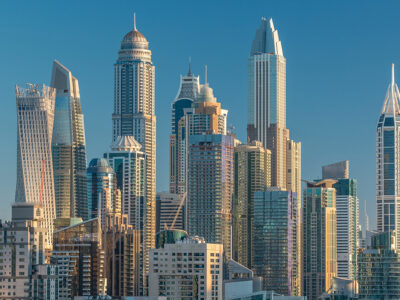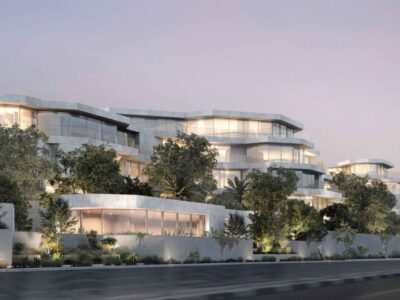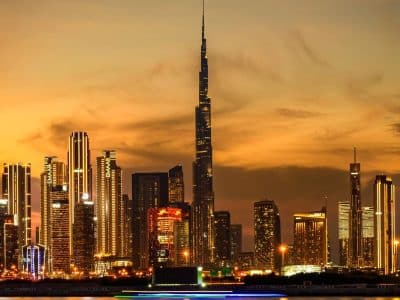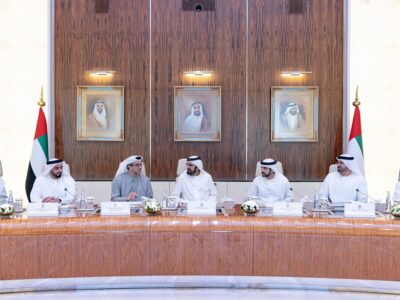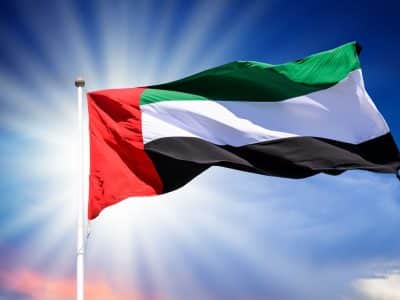The Dubai luxury home market is set for ‘significant evolution’ over the next few years, property experts say.
The real estate market in the city has been seeing unprecedented demand from national and international investors, recently propelled by the influx of high-net-worth and ultra-high-net-worth individuals relocating to Dubai.
“Over the past three years, Dubai has welcomed thousands of millionaires and tens of billionaires from diverse nationalities, creating a dynamic and robust real estate ecosystem,” Firas Al Msaddi, CEO, fäm Properties said in an exclusive interview with Arabian Business.
The luxury home market, specifically, has been seeing increased interest with new features and amenities emerging to fuel the investor demand. With projections of a steady incline in the luxury home sector, what is the future of luxury homes in Dubai?
Sustainability: The new standard
The transformation will be driven by several key trends, including a heightened focus on sustainability, technological integration, and lifestyle-oriented investments, according to several industry experts.
“I would anticipate that the luxury home market in Dubai will reach a new level of quality, pioneering in every area, and outcompeting the international luxury market,” said Mokhtar El Kouche, Sales Manager, Off Plan & Investment, haus & haus Real Estate
El Kouche attributes the increasing expectations to investors having “travelled to and/or lived in the most developed and top ten tech-savvy cities in the world and are always looking for the most innovative fully connected homes where the level of comfort is at its best.”
Experts point to several key trends that are likely to shape the future of high-end properties in Dubai.
- Well-being amenities: State-of-the-art gyms, spas, yoga studios, meditation centres, massage rooms etc
- Work-friendly amenities: Meeting rooms, soundproof booths, podcast rooms.
- Family-friendly amenities: Nursery for kids, swimming pools, parks and playgrounds.
- Luxury adult facilities: Licensed bars, observation decks, lounges.
“While demand for sustainable living in Dubai is not yet at the levels seen in parts of Europe, such as Switzerland, it is gaining traction,” Msaddi explained.

This shift towards technology and sustainability is expected to have a profound impact on property design and features. Regan Faulker, Associate Director at Dubai Sotheby’s International Realty said, “A growing emphasis on sustainability will drive developers to focus on eco-friendly materials and energy-efficient designs, appealing to environmentally conscious buyers.”
Faulker adds to this list, mentioning “exclusive access to private beaches and marinas for waterfront living, sky lounges, rooftop pools, and infinity pools offering panoramic views of the city.”
The growing emphasis on smart home technology and automation is a critical trend shaping Dubai’s luxury home market. Buyers are increasingly demanding integrated home automation systems that control lighting, heating, cooling, and security through centralised platforms.
“Technological integration, including smart home systems and automation, will also become more prevalent as consumers seek modern conveniences and enhanced security,” Ioana Armeanu, Associate Director at Dubai Sotheby’s International Realty added.
“The market will see a more diverse range of buyers, including millennials and international investors, influencing design preferences toward connectivity and lifestyle options,” Faulker and Armeanu predict. This shift reflects a broader trend towards lifestyle-oriented investments, where homes are seen not just as residences but as comprehensive lifestyle environments.
Msaddi believes that, “although Dubai’s low crime rate reduces the emphasis on security systems, smart technology focuses on home management and maintenance.”
Evolving market dynamics: Demand and regulatory changes
The rising influx of UHNWIs and HNWIs to the region, according to Mokhtar, “is due to the geopolitical turmoil and economic instability in the west (Europe) and far east (India, China), the demand is anticipated to exceed by far the luxury supply stock.”
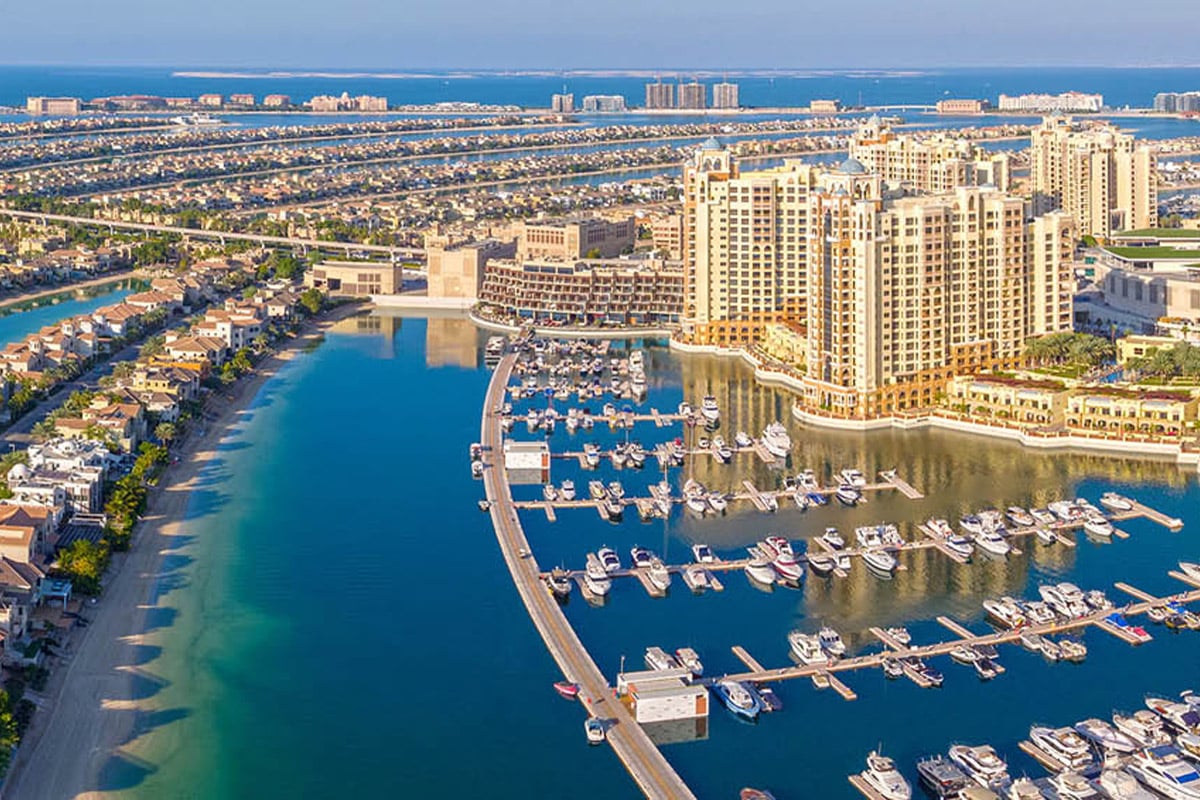
He further anticipates that the “relocation of the main airport to Al Maktoum will play a huge role in new locations being considered by wealthy buyers for luxury which will drive developers to satisfy the market needs.”
Regulatory changes aimed at attracting foreign investment, such as long-term visas and property ownership reforms, will also stimulate the luxury market. “These reforms will enhance Dubai’s appeal as a global real estate hub,” Faulker and Armeanu assert. Ongoing urban development projects, including new transport links and cultural institutions, will increase property values and demand in certain areas, making Dubai even more attractive to investors.
Despite global economic challenges, Dubai’s luxury real estate sector has shown remarkable resilience with a particularly notable surge in the luxury segment.
Last month, Arabian Business reported that Dubai is on track to surpass global real estate powerhouses, including New York and Miami, standing as the global capital of branded residences.
According to ARADA, the number is expected to double within the next decade.
“Dubai, which is always at the forefront of all innovation, used to be the third or fourth city by branded residence scheme. And now, with the next decade, the number of schemes is set to double,” said Rosa Piro, Senior Business Development Director at ARADA.
The market is poised to attract further investment accelerated by regulatory changes that are aimed at attracting foreign such as long-term visas and property ownership reforms.
“Ongoing urban development projects, including new transport links and cultural institutions, will increase property values and demand in certain areas,” Armenau said.

Dubai’s luxury home market: Price stability and growth
Providing insight into the prices and demand for luxury homes in prime Dubai hotspots including Downtown Dubai, Palm Jumeirah and Dubai Marina, Mokhtar said, “Midterm: We see luxury prices in such prime locations stabilise because from the demand side, there is a projected net inflows of 6,700 millionaires for 2024, an outstanding amount from the supply side, these locations will lose market share to other new locations that are being developed as we speak and projected to launch in the next five years.”
“Long term: We see luxury prices in such prime locations increase because Dubai will be even more built up with less land to exploit around new and old central locations. Dubai is projected to be on the same or even higher economic level as the top ten powerful cities in the world such as London, Hong Kong, Singapore, Paris, and New York – which it is already competing with now,” he added.
The luxury home market in prime Dubai locations is anticipated to “remain strong”, Faulker explained, “with prices likely to experience moderate growth due to ongoing demand for high-quality, well-positioned properties.
Areas such as Downtown Dubai and Palm Jumeirah will continue to draw high-net-worth individuals and investors, sustaining strong demand. Additionally, emerging locales like Jumeirah Bay, La Mer, Pearl Jumeirah, Dubai Hills and Mohammed Bin Rashid City are expected to gain increased interest as they develop into prominent luxury destinations.”
In the medium to long term, the luxury home market in prime Dubai locations like Downtown, Palm Jumeirah, and Dubai Marina is anticipated to remain robust. “Prices are likely to experience moderate growth due to ongoing demand for high-quality, well-positioned properties,” Faulker and Armeanu predict.
Emerging locales such as Jumeirah Bay, La Mer, Pearl Jumeirah, Dubai Hills, and Mohammed Bin Rashid City are expected to gain increased interest as they develop into prominent luxury destinations.
El Kouche adds that while prices in prime locations may stabilise in the short term due to supply dynamics, they are expected to rise in the long term as Dubai becomes more built-up with less land available for new developments. “Dubai is projected to compete with top global cities like London, Hong Kong, Singapore, Paris, and New York,” he stated. This competitive positioning will further enhance Dubai’s attractiveness as a destination for luxury real estate investment.
“Communities that are prime but not yet fully developed, especially those near central locations, are anticipated to experience steady price growth,” Msaddi added.
Challenges and risks: Navigating the future
Despite the positive outlook, the luxury home market in Dubai faces several challenges and risks. One significant concern is the potential for oversupply, which could lead to fluctuations in property values if the market becomes saturated with new developments. Global economic uncertainties may also impact investor confidence and influence market conditions.
Meeting strict sustainability and environmental standards presents another challenge for developers. However, Dubai’s proactive efforts in urban planning and supportive policies contribute to a favourable real estate environment. “This environment fosters growth and stability, enhancing Dubai’s appeal as a prime destination for luxury real estate investment,” Faulker and Armeanu conclude.
Dubai’s luxury home market is on the brink of a transformative era, driven by sustainability, technological innovation, and lifestyle-oriented investments. As the city continues to attract a diverse and affluent demographic, the demand for high-quality, well-designed, and amenity-rich properties will remain strong.
With regulatory changes and ongoing urban development projects further enhancing its appeal, Dubai is set to solidify its position as a global leader in the luxury real estate.
However, in a rapidly growing market, there are certain challenges that the market is anticipated to face on a macroeconomic level.
